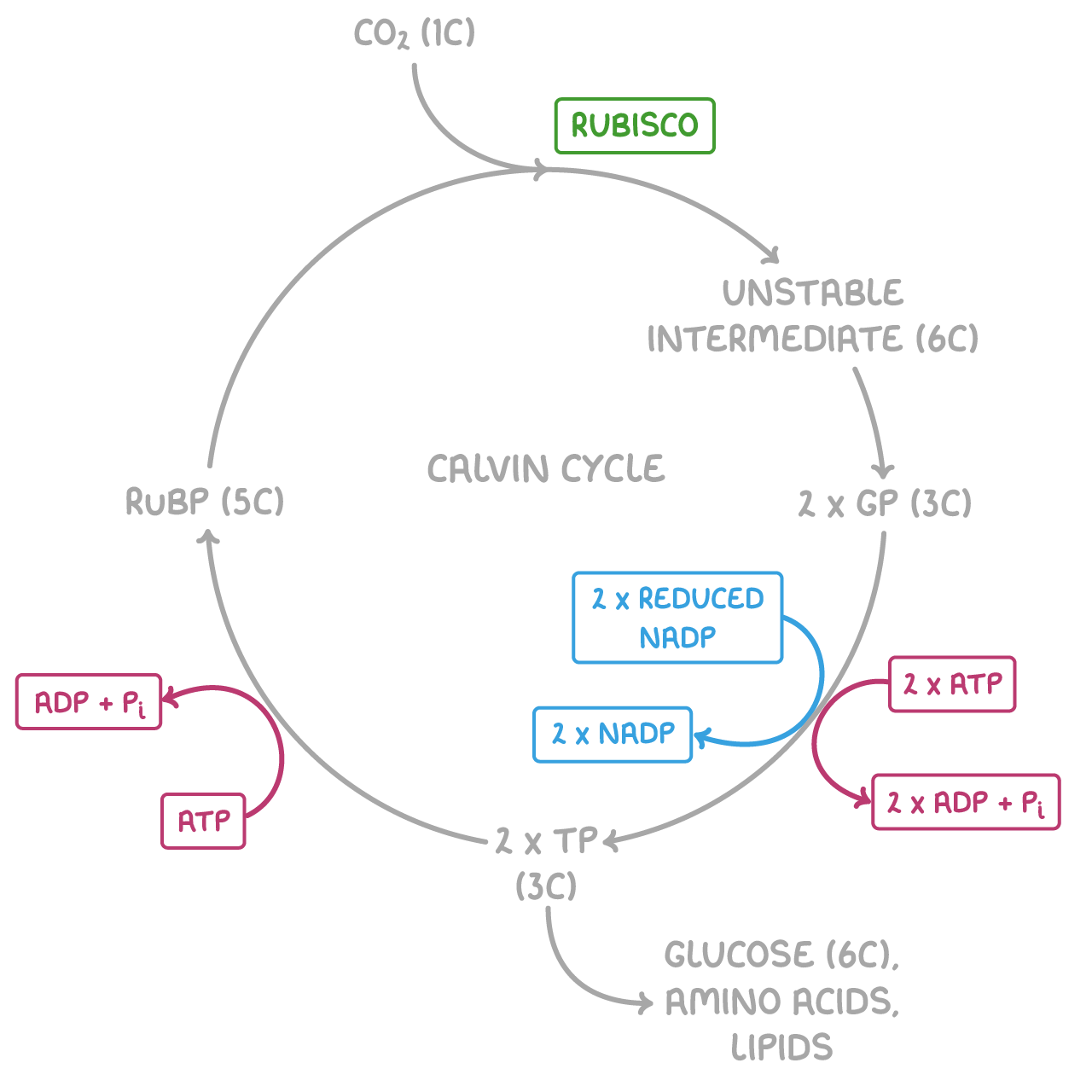Light-independent Reaction
This lesson covers:
- An overview of the light-independent reaction
- The stages of the light-independent reaction
- The uses of triose phosphate
Overview of light-independent reaction
The light-independent reaction occurs in the stroma of chloroplasts.
Reactants:
- Carbon dioxide
- ATP
- Reduced NADP from light-dependent reaction
Products:
- Glucose
- Other organic molecules
Stages of light-independent reaction
There are three main stages of the light-independent reaction: fixation, reduction, and regeneration. As it is a cyclical process, it is sometimes called the Calvin cycle.

Carbon fixation:
- Carbon dioxide reacts with a 5-carbon (5C) compound ribulose bisphosphate (RuBP) to form an unstable 6C compound.
- This 6C compound splits into two 3C glycerate-3-phosphate (GP) molecules.
- This is catalysed by the enzyme ribulose bisphosphate carboxylase (rubisco).
Reduction of GP:
- GP is reduced into triose phosphate (TP).
- This uses energy from the hydrolysis of ATP.
- This also requires protons and electrons from reduced NADP, which itself is oxidised to regenerate NADP.
- The NADP that is re-formed returns to the light-dependent reaction to be reduced again.
Regeneration of RuBP:
- Most TP is used to regenerate RuBP using ATP.
- The rest of the TP can be used to make other organic molecules.
For each turn of the Calvin cycle, five carbons are used to regenerate RuBP (5C) and only one carbon, from CO2 (1C), is available to make new organic compounds. This means six full turns of the Calvin cycle are needed to make one molecule of glucose (6C).
Uses of triose phosphate
Apart from being used to regenerate RuBP, TP can be used to make other useful molecules.
For example, TP can be used to make:
- Simple sugars (e.g. glucose)
- Larger carbohydrates (e.g. starch, sucrose, and cellulose)
- Amino acids
- Lipids
- Nucleotides